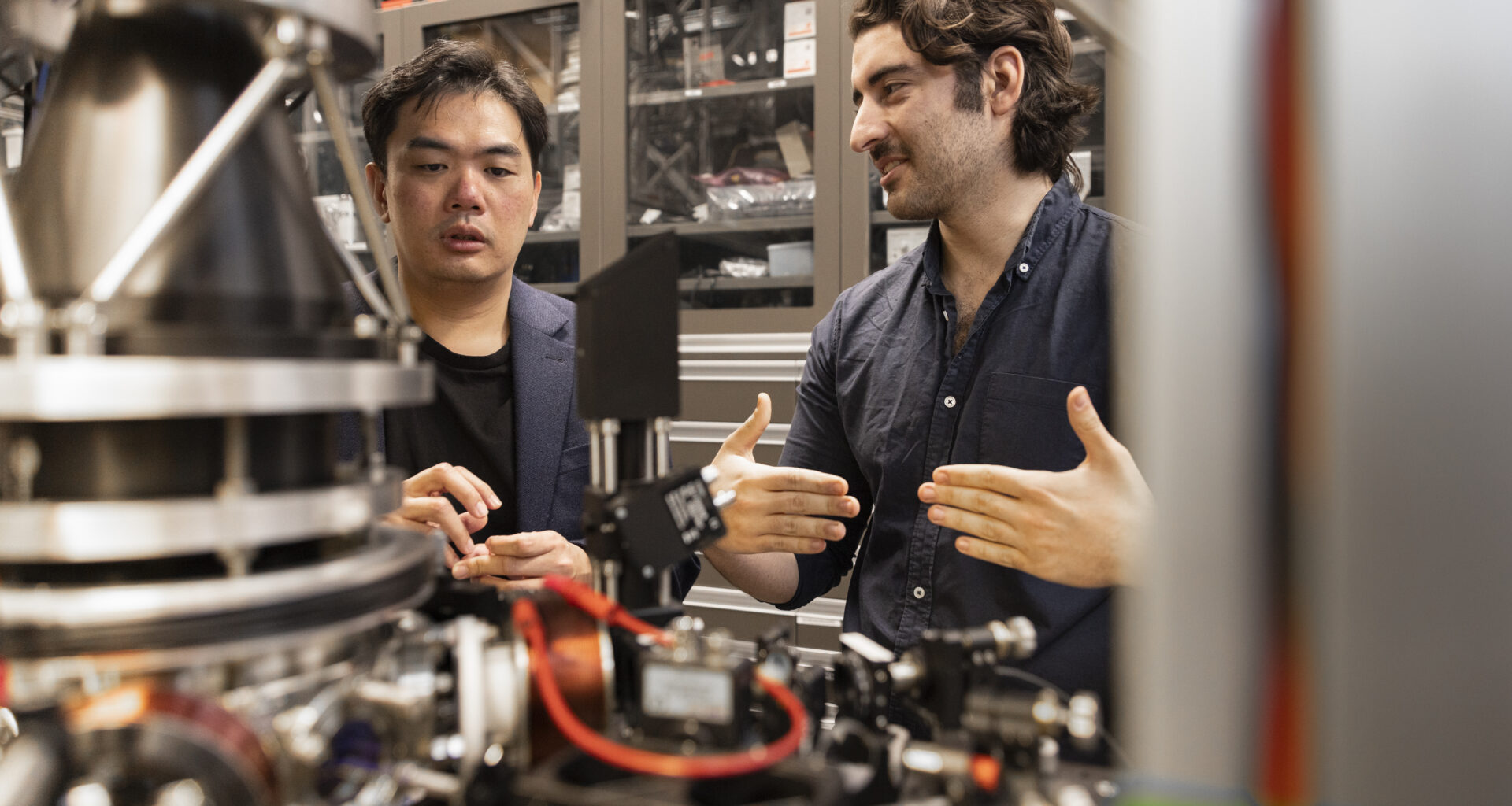A logic gate is an information switch that allows computers – quantum and classical – to be programmable to perform logical operations. Quantum logic gates use the entanglement of qubits to produce a completely different sort of operational system to that used in classical computing, underpinning the great promise of quantum computers.
First author Vassili Matsos is a PhD student in the School of Physics and Sydney Nano. He said: “Effectively, we store two error-correctable logical qubits in a single trapped ion and demonstrate entanglement between them.
“We did this using quantum control software developed by Q-CTRL , a spin-off start-up company from the Quantum Control Laboratory, with a physics-based model to design quantum gates that minimise the distortion of GKP logical qubits, so they maintain the delicate structure of the GKP code while processing quantum information.”
Milestone in quantum tech
What Mr Matsos did is entangle two ‘quantum vibrations’ of a single atom. The trapped atom vibrates in three dimensions. Movement in each dimension is described by quantum mechanics and each is considered a ‘quantum state’. By entangling two of these quantum states realised as qubits, Mr Matsos created a logic gate using just a single atom, a milestone in quantum technology.
This result massively reduces the quantum hardware required to create these logic gates, which allow quantum machines to be programmed.
Dr Tan said: “GKP error correction codes have long promised a reduction in hardware demands to address the resource overhead challenge for scaling quantum computers. Our experiments achieved a key milestone, demonstrating that these high-quality quantum controls provide a key tool to manipulate more than just one logical qubit.
“By demonstrating universal quantum gates using these qubits, we have a foundation to work towards large-scale quantum-information processing in a highly hardware-efficient fashion.”
Across three experiments described in the paper, Dr Tan’s team used a single ytterbium ion contained in what is known as a Paul trap. This uses a complex array of lasers at room temperature to hold the single atom in the trap, allowing its natural vibrations to be controlled and utilised to produce the complex GKP codes.
This research represents an important demonstration that quantum logic gates can be developed with a reduced physical number of qubits, increasing their efficiency.
Research
Matsos, V. et al ‘Universal quantum gate set for Gottesman-Kitaev-Preskill logical qubits’ ( Nature Physics 2025) DOI: 10.1038/s41567-025-03002-8
Declaration
The authors declare no competing interests. Funding was received from the Australian Research Council, Sydney Horizon Fellowship, the US Office of Naval Research, the US Army Research Office, the US Air Force Office of Scientific Research, Lockheed Martin, Sydney Quantum Academy and private funding from H. and A. Harley.
Main image
PhD student and first author Vassili Matsos inspects the Paul trap used in this experiment in the Quantum Control Laboratory in the Sydney Nanoscience Hub. Photo: Fiona Wolf/University of Sydney
